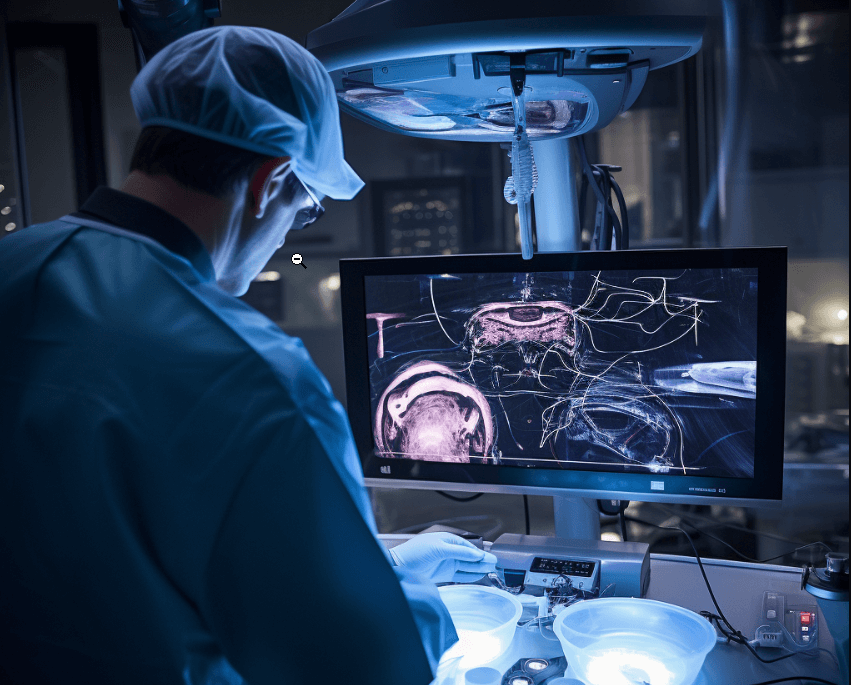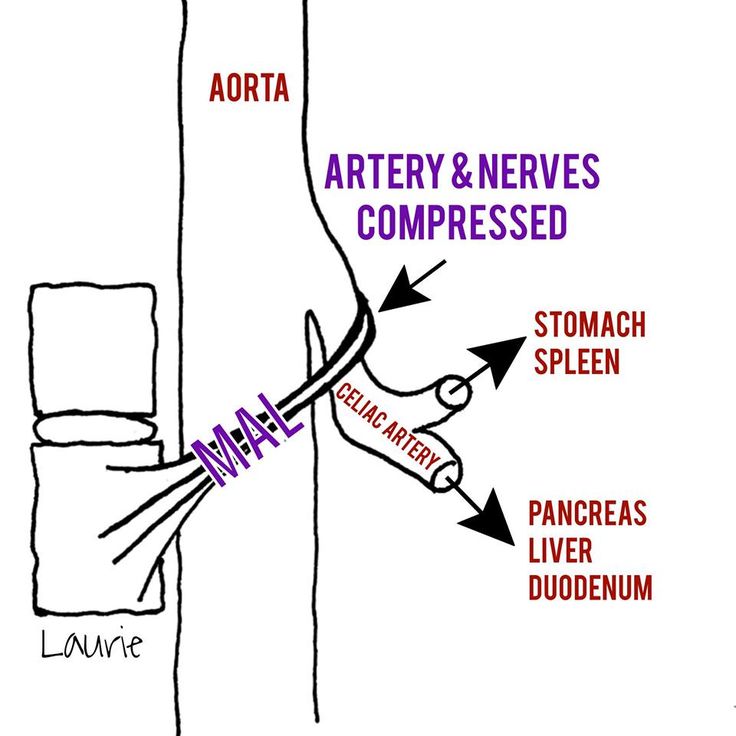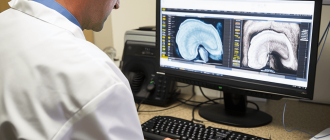Surgical Interventions for MALS: The Benefits of Laparoscopic Decompression.

Laparoscopic decompression is a surgical intervention for MALS (Median Arcuate Ligament Syndrome) that offers significant advantages over traditional open surgery. This minimally invasive technique allows for a quicker recovery, less scarring, and reduced post-operative pain.
At our state-of-the-art facility, our team of skilled surgeons specializes in laparoscopic decompression procedures for patients with MALS. Our advanced equipment and innovative techniques ensure optimal results and patient satisfaction.
Are you tired of living with the debilitating symptoms of MALS? Contact us today to schedule a consultation with our experienced surgeons and discover the advantages of laparoscopic decompression.
What is MALS?
MALS stands for Median Arcuate Ligament Syndrome. It is a rare condition that affects the celiac artery, a major blood vessel in the abdomen. In individuals with MALS, the median arcuate ligament (a ligament that connects the diaphragm and the spine) compresses the celiac artery, disrupting blood flow to the stomach, liver, and intestines.
The symptoms of MALS can vary from person to person but commonly include severe abdominal pain after eating, unintentional weight loss, nausea, and vomiting. It can greatly impact a person’s quality of life and overall health.
Surgical decompression is the primary treatment for MALS. It involves releasing the constriction of the median arcuate ligament by cutting or removing part of the ligament. This procedure allows for improved blood flow to the affected organs and symptom relief.
The laparoscopic approach for decompression is a minimally invasive surgical technique that offers several benefits for MALS patients. It involves making small incisions in the abdomen and using a specialized camera and instruments to perform the surgery. The advantages of laparoscopic decompression include:
- Smaller incisions and less scarring
- Reduced blood loss during surgery
- Shorter hospital stay and faster recovery
- Less postoperative pain
- Lower risk of complications
Overall, laparoscopic decompression is a safe and effective surgical intervention for MALS that offers numerous benefits for patients. If you are experiencing symptoms of MALS, it is important to consult with a qualified healthcare professional to discuss your treatment options.
Symptoms of MALS
Patients with MALS (Median Arcuate Ligament Syndrome) often experience a range of symptoms that can significantly impact their quality of life. MALS is a condition characterized by the compression of the celiac artery by the median arcuate ligament, leading to reduced blood flow to the digestive organs.
Common symptoms of MALS include:
- Abdominal pain: Patients may experience chronic, severe pain in the upper abdomen that worsens after eating.
- Nausea and vomiting: The reduced blood flow to the digestive organs can cause digestive issues, leading to frequent episodes of nausea and vomiting.
- Weight loss: MALS can affect nutrient absorption, leading to unintentional weight loss.
- Diarrhea: Patients may experience frequent bowel movements and loose stools.
- Postprandial discomfort: Discomfort and bloating after eating are common in patients with MALS.
- Food intolerance: Some patients may develop intolerances to certain foods.
- Malnutrition: The reduced blood flow to the digestive organs can result in malnutrition if not properly managed.
If you are experiencing any of these symptoms, it is important to consult with a healthcare professional who can evaluate your condition and determine if interventions such as laparoscopic decompression could benefit you.
Laparoscopic decompression is a minimally invasive surgical procedure that involves releasing the compression of the celiac artery, allowing for improved blood flow to the digestive organs. The benefits of laparoscopic decompression for patients with MALS include:
- Reduction in abdominal pain: By relieving the compression on the celiac artery, laparoscopic decompression can help alleviate abdominal pain.
- Improved digestion: Better blood flow to the digestive organs can help improve digestion and reduce symptoms such as nausea, vomiting, and diarrhea.
- Increased nutrient absorption: Laparoscopic decompression can help improve nutrient absorption, leading to better overall health and weight management.
- Enhanced quality of life: Relief from the symptoms of MALS can significantly improve a patient’s quality of life and enable them to engage in daily activities without discomfort.
If you are struggling with the symptoms of MALS, laparoscopic decompression may be a viable treatment option for you. Consult with a medical professional to discuss your symptoms and determine the best course of action.
Traditional Treatment Approaches
Surgical interventions for MALS have traditionally involved open surgery techniques with large incisions. However, with the advances in laparoscopic technology, laparoscopic decompression has emerged as a preferred method for the treatment of MALS.
Laparoscopic decompression offers several benefits compared to traditional open surgery:
- Minimally invasive: Laparoscopic surgery requires smaller incisions, resulting in less trauma to the surrounding tissues.
- Faster recovery: Patients who undergo laparoscopic decompression often experience shorter hospital stays and quicker return to their daily activities.
- Reduced pain and scarring: The smaller incisions in laparoscopic surgery result in less post-operative pain and scarring.
- Improved cosmetic outcome: Laparoscopic decompression offers a more aesthetically pleasing result, with smaller scars that are less visible.
- Lower risk of complications: Laparoscopic surgery carries a lower risk of infection and other complications compared to traditional open surgery.
Overall, laparoscopic decompression for MALS provides a more advanced and patient-friendly approach to treatment, offering numerous benefits over traditional open surgery techniques.
Advantages of Laparoscopic Decompression
When it comes to surgical interventions for MALS (Median Arcuate Ligament Syndrome), laparoscopic decompression offers a range of benefits. This minimally invasive procedure involves making small incisions and using specialized instruments to access the affected area.
- Less pain: Compared to traditional open surgery, laparoscopic decompression typically results in less post-operative pain. The smaller incisions and reduced trauma to the surrounding tissues contribute to a quicker and more comfortable recovery.
- Faster recovery: Laparoscopic decompression allows patients to return to their normal activities sooner. The minimally invasive approach reduces the risk of complications and shortens the hospital stay compared to open surgery.
- Minimal scarring: With laparoscopic decompression, the incisions are small and often hidden in the natural creases or folds of the skin. This results in minimal scarring, which is a cosmetic advantage for many patients.
- Lower risk of infection: The smaller incisions and reduced exposure of the internal organs during laparoscopic decompression lower the risk of post-operative infections. This can lead to a smoother recovery process and fewer complications.
- Improved visualization: Laparoscopic decompression provides surgeons with a magnified view of the surgical site through a camera inserted into one of the incisions. This enhanced visualization allows for precise and accurate surgical maneuvers.
- Reduced blood loss: Compared to open surgery, laparoscopic decompression typically results in less blood loss. This can reduce the need for blood transfusions and decrease the overall risk associated with the procedure.
In summary, laparoscopic decompression offers multiple advantages for patients undergoing surgical interventions for MALS. The procedure’s minimally invasive nature leads to less pain, faster recovery, minimal scarring, lower risk of infection, improved visualization, and reduced blood loss.
Less Invasive Procedure
Surgical interventions for MALS are often performed using laparoscopic decompression techniques. This less invasive procedure offers several benefits for patients suffering from MALS.
- Minimal Scarring: Laparoscopic decompression involves small incisions, resulting in minimal scarring compared to traditional open surgery.
- Faster Recovery Time: The minimally invasive nature of laparoscopic decompression allows for a quicker recovery time, enabling patients to return to their daily activities sooner.
- Reduced Pain: Laparoscopic decompression is associated with reduced postoperative pain, which helps improve patient comfort during the recovery period.
- Shorter Hospital Stay: With laparoscopic decompression, patients typically have shorter hospital stays compared to open surgery, contributing to a more efficient healthcare process.
Overall, laparoscopic decompression offers a less invasive and efficient surgical option for individuals seeking treatment for MALS.
Faster Recovery Time
Surgical interventions for MALS, such as laparoscopic decompression, offer several benefits, including faster recovery time.
- Minimal Incisions: Laparoscopic surgery involves making small incisions instead of a large, open incision. This results in less tissue damage and quicker healing.
- Reduced Pain: Laparoscopic surgery is less invasive and therefore often leads to less pain post-operatively. Patients can expect to experience less discomfort during their recovery period.
- Shorter Hospital Stay: With laparoscopic interventions, patients typically have a shorter hospital stay compared to traditional open surgery. This allows them to return to their normal activities faster.
- Quicker Return to Normal Activities: Due to the minimally invasive nature of laparoscopic surgery, patients generally experience a faster recovery and can resume their normal daily activities sooner.
In summary, laparoscopic surgical interventions for MALS offer the advantage of faster recovery time. Patients can benefit from minimal incisions, reduced pain, shorter hospital stays, and quicker return to normal activities. Consult with a medical professional to learn more about the benefits of laparoscopic decompression for MALS.
Lower Risk of Complications
When it comes to surgical interventions for MALS, the laparoscopic approach offers several advantages, including a lower risk of complications. Compared to traditional open surgery, laparoscopic decompression has been shown to significantly reduce the likelihood of post-operative complications.
One of the main reasons for the lower risk of complications is the minimally invasive nature of laparoscopic interventions. Instead of making a large incision, surgeons only need to make a few small incisions and use a thin, flexible laparoscope to perform the procedure. This leads to less tissue damage, reduced bleeding, and a faster recovery time for patients.
Additionally, laparoscopic decompression for MALS is associated with a lower risk of infection compared to open surgery. The smaller incisions used in laparoscopic procedures result in less exposure of internal organs to outside contaminants, reducing the risk of post-operative infections.
The risk of complications such as blood clots and deep vein thrombosis is also lower with laparoscopic interventions. This is because patients undergoing laparoscopic surgery experience less trauma to their blood vessels and have a shorter hospital stay, which decreases the chances of developing these complications.
In summary, opting for laparoscopic decompression for MALS can significantly lower the risk of post-operative complications. The minimally invasive nature of the procedure, reduced tissue damage, decreased risk of infection, and lower likelihood of blood clots make laparoscopic interventions a safer option for patients.
Procedure Overview
In the field of surgical interventions for MALS, laparoscopic decompression is considered one of the most effective treatments. This minimally invasive procedure aims to relieve the symptoms caused by median arcuate ligament syndrome (MALS) by relieving the compression of the celiac artery.
The benefits of laparoscopic decompression for MALS include:
- Less postoperative pain compared to open surgery
- Smaller incisions and minimal scarring
- Shorter hospital stays
- Faster recovery time
- Reduced risk of complications
During the laparoscopic decompression procedure, small incisions are made in the abdomen and a laparoscope, a thin tube with a small camera, is inserted to provide a clear view of the surgical area. The surgeon then carefully releases the median arcuate ligament to relieve the compression on the celiac artery.
With the advantages offered by laparoscopic decompression, patients with MALS can experience improved quality of life and relief from the debilitating symptoms associated with this condition.
Preoperative Preparation
Before undergoing laparoscopic decompression surgery for MALS, there are several important steps that need to be taken. These preparations are crucial to ensure a successful surgical intervention and to minimize any potential risks or complications.
- Evaluation and consultation: Patients will undergo a thorough evaluation to assess their overall health and suitability for laparoscopic decompression. This may include a physical examination, medical history review, and additional tests or imaging studies.
- Discussion of benefits and risks: The surgeon will discuss the potential benefits of laparoscopic decompression for MALS, as well as any associated risks or complications. This is an opportunity for patients to ask questions and address any concerns they may have.
- Preoperative instructions: Patients will receive specific instructions on how to prepare for the surgery, including guidelines on fasting, medications to avoid, and any necessary lifestyle modifications.
- Medication management: Patients may need to adjust or temporarily stop certain medications leading up to the surgery. This will be discussed and coordinated with the healthcare team to ensure optimal safety and effectiveness of the surgery.
- Arranging support: It is important for patients to arrange for someone to accompany them on the day of surgery and to have someone available to provide support during the recovery period.
- Preparing for hospital stay: Patients will receive information on what to expect during their hospital stay, including preoperative tests, anesthesia, and postoperative care.
By following these preoperative preparations, patients can maximize the benefits of laparoscopic decompression for MALS and set themselves up for a successful surgical intervention.
Anesthesia
Anesthesia plays a crucial role in surgical interventions for the decompression of MALS. Laparoscopic decompression is a minimally invasive procedure that allows surgeons to diagnose and treat MALS effectively. Here are some benefits of using anesthesia in laparoscopic surgical interventions:
- Pain management: Anesthesia ensures that patients experience little to no pain during the procedure. This helps improve patient comfort and allows surgeons to perform the necessary decompression without any discomfort.
- Relaxation and sedation: Anesthesia helps patients relax and stay sedated throughout the surgical intervention. It allows surgeons to perform the laparoscopic decompression procedure with ease and precision.
- Reduced risk of complications: Anesthesia helps minimize the risk of complications during the surgical intervention. The use of anesthesia ensures that patients are stable and their vital signs are closely monitored throughout the procedure.
Overall, anesthesia plays a vital role in laparoscopic surgical interventions for the decompression of MALS. It ensures patient comfort, relaxation, and safety, allowing surgeons to perform the necessary procedures with the utmost precision and effectiveness.
Laparoscopic Instruments
The use of laparoscopic instruments in surgical interventions for MALS (Median Arcuate Ligament Syndrome) has revolutionized the field and brought numerous benefits to both patients and surgeons. Laparoscopic decompression of the median arcuate ligament is one such procedure that utilizes these advanced instruments.
Decompression of the median arcuate ligament is a surgical intervention designed to relieve the compression of the celiac artery caused by the tightness of the ligament. This compression can lead to a variety of symptoms, such as chronic abdominal pain, weight loss, and digestive issues.
With the help of laparoscopic instruments, surgeons can perform this decompression procedure with precision and minimal invasiveness. These instruments are specially designed to allow for precise movements and visualization inside the patient’s abdomen. They typically include:

- Laparoscope: This is a long, slender instrument with a light source and camera attached to one end. It is inserted through a small incision and provides a magnified view of the surgical site.
- Trocar: Trocars are used to create access points for other instruments to enter the abdominal cavity. They are typically inserted through small incisions and provide a pathway for the laparoscope and other instruments.
- Graspers and dissectors: These instruments are used to manipulate and dissect tissues during the decompression procedure. They come in various sizes and designs to accommodate different surgical needs.
- Suturing devices: Laparoscopic suturing devices allow surgeons to close incisions and secure tissues with sutures. These devices offer precise control and minimize tissue trauma.
The use of laparoscopic instruments in surgical interventions for MALS offers several benefits over traditional open surgery. These benefits include:
- Smaller incisions: Laparoscopic procedures require smaller incisions compared to open surgery, resulting in less postoperative pain, reduced scarring, and faster recovery times.
- Reduced risk of complications: The minimally invasive nature of laparoscopic procedures leads to a lower risk of complications such as infection, bleeding, and hernias.
- Improved visualization: Laparoscopic instruments provide a magnified view of the surgical site, allowing for better visualization and precision during the decompression procedure.
- Shorter hospital stays: Patients undergoing laparoscopic decompression for MALS can often go home the same day or within a few days, leading to shorter hospital stays and reduced healthcare costs.
- Quicker return to normal activities: The faster recovery times associated with laparoscopic procedures allow patients to return to their normal activities sooner.
Overall, the use of laparoscopic instruments in surgical interventions for MALS has revolutionized the treatment of this condition. It offers numerous benefits for both patients and surgeons, including smaller incisions, reduced risk of complications, improved visualization, shorter hospital stays, and quicker return to normal activities.
Benefits of Laparoscopic Decompression
The laparoscopic decompression for Median Arcuate Ligament Syndrome (MALS) is a minimally invasive surgical intervention that offers several advantages for patients suffering from this condition. Here are the key benefits of laparoscopic decompression:
- Minimally invasive: Laparoscopic decompression is performed using small incisions and specialized surgical instruments, resulting in less trauma to the body compared to traditional open surgery. This leads to reduced pain, minimal scarring, and faster recovery for patients.
- Effective treatment: Laparoscopic decompression has proven to be an effective surgical intervention for MALS. By releasing the compression of the median arcuate ligament on the celiac artery, it helps alleviate symptoms such as chronic abdominal pain, weight loss, and postprandial distress, resulting in improved quality of life for patients.
- Shorter hospital stay: The laparoscopic approach allows for a shorter hospital stay compared to open surgery. After the procedure, patients typically spend only a few days in the hospital before being discharged, allowing them to return to their daily activities sooner.
- Quick recovery: Laparoscopic decompression enables a quicker recovery compared to open surgery. Patients experience less postoperative pain, require fewer pain medications, and can resume their normal activities within a shorter period of time, enhancing their overall recovery process.
- Lower complication rates: Laparoscopic decompression has been shown to have lower complication rates compared to open surgery. The minimally invasive approach reduces the risk of infection, wound healing problems, and other postoperative complications, ensuring a safer and smoother recovery for patients.
In conclusion, laparoscopic decompression offers significant benefits for patients undergoing surgical interventions for MALS. Its minimally invasive nature, effectiveness in treating MALS symptoms, shorter hospital stay, quicker recovery, and lower complication rates make it a favorable option for patients seeking relief from this condition.
Improved Blood Flow
One of the benefits of laparoscopic surgical interventions for MALS is improved blood flow. Malas stands for Median Arcuate Ligament Syndrome, which is a condition that causes compression of the celiac artery. This compression can lead to chronic abdominal pain and other debilitating symptoms.
With laparoscopic surgical interventions, surgeons can decompress the celiac artery and restore normal blood flow. This can provide relief from pain and improve overall quality of life for patients with MALS.
The laparoscopic approach offers several advantages over traditional open surgery. It is a minimally invasive technique that involves smaller incisions and less tissue damage. This results in less post-operative pain, faster recovery time, and reduced risk of complications.
During the laparoscopic procedure, the surgeon uses a small camera and specialized instruments to access the affected area. They can then carefully release the compressed ligament and restore normal blood flow to the celiac artery.
The benefits of laparoscopic surgical interventions for MALS include:
- Improved blood flow
- Relief from chronic abdominal pain
- Improved quality of life
- Minimally invasive technique
- Smaller incisions and less tissue damage
- Less post-operative pain
- Faster recovery time
- Reduced risk of complications
If you are suffering from MALS and experiencing chronic abdominal pain, laparoscopic surgical interventions may be a viable treatment option for you. Consult with a qualified surgeon to discuss the benefits and risks of this procedure.
Reduced Symptoms
Surgical interventions for MALS, such as laparoscopic decompression, offer significant benefits for patients suffering from median arcuate ligament syndrome (MALS). By relieving the pressure caused by the ligament on the celiac artery, surgical decompression can help alleviate the symptoms associated with MALS and improve quality of life.
Some of the benefits of laparoscopic decompression include:
- Relief from abdominal pain
- Improved digestion and appetite
- Reduced nausea and vomiting
- Increased energy and stamina
- Enhanced overall well-being
The surgical intervention for MALS removes the compression on the celiac artery, allowing for improved blood flow and oxygen supply to the abdominal organs. This can lead to a reduction in symptoms and an overall improvement in the patient’s well-being.
While non-surgical treatments may be effective for some patients, laparoscopic decompression offers a more targeted and long-lasting solution. By directly addressing the underlying cause of MALS, surgical intervention can provide sustained relief from symptoms and improve the patient’s quality of life.
Enhanced Quality of Life
Surgical interventions for laparoscopic decompression have numerous benefits that can greatly improve the quality of life for individuals suffering from median arcuate ligament syndrome (MALS). These benefits include:
- Relief from Symptoms: Laparoscopic decompression surgery effectively relieves the symptoms of MALS, such as chronic abdominal pain, nausea, and vomiting.
- Improved Digestive Function: By relieving the compression on the celiac artery, laparoscopic decompression surgery allows for improved blood flow to the digestive organs, resulting in better digestion and reduced gastrointestinal symptoms.
- Increased Energy Levels: With improved blood flow and reduced pain, patients experience increased energy levels and are able to engage in daily activities without limitations.
- Enhanced Physical Well-being: Surgical intervention for MALS can improve overall physical well-being by reducing or eliminating symptoms that may have been negatively impacting health and fitness.
- Improved Mental Health: Chronic pain and limited physical function can take a toll on mental health. However, with laparoscopic decompression surgery, patients often experience improved mental well-being and a reduced need for pain medication.
Overall, surgical interventions for laparoscopic decompression offer significant benefits that can greatly enhance the quality of life for individuals suffering from MALS. Consult with a healthcare professional to determine if this surgical intervention is right for you.
Postoperative Care
After undergoing surgical interventions for MALS, laparoscopic decompression offers several benefits. One important aspect of the recovery process is postoperative care, which plays a crucial role in ensuring a successful outcome. Here are some key recommendations for postoperative care:
- Rest: It is essential to get ample rest following the surgery to allow the body to heal properly. Avoid strenuous activities and limit physical exertion.
- Pain Management: Your doctor will prescribe pain medication to help manage any discomfort or pain during the recovery period. Take the medication as directed and report any excessive pain or side effects to your healthcare team.
- Incision Care: Proper care of the incision site is crucial to prevent infection. Keep the area clean and dry, and follow any specific instructions provided by your surgeon.
- Dietary Restrictions: Your surgeon may recommend a specific diet plan during the recovery period. Follow these recommendations to promote healing and avoid any complications.
- Physical Activity: Gradually reintroduce physical activity into your routine as advised by your surgeon. Start with gentle exercises and gradually increase intensity over time.
- Follow-up Appointments: Attend all scheduled follow-up appointments with your surgeon to monitor your progress and address any concerns.
Remember, proper postoperative care is essential for a successful recovery after surgical interventions for MALS. It is important to follow your surgeon’s instructions and notify them of any unexpected symptoms or complications.
Pain Management
Surgical Interventions for MALS: Discover the Benefits of Laparoscopic Decompression
If you suffer from MALS, you know how debilitating the pain can be. Fortunately, laparoscopic decompression is a highly effective surgical intervention for MALS, providing relief and improving your quality of life.
The Benefits of Laparoscopic Decompression for MALS
- Minimally invasive procedure
- Shorter hospital stay
- Faster recovery time
- Less pain and scarring
- Improved overall quality of life
During the laparoscopic decompression procedure, a small incision is made, and a laparoscope is inserted to visualize the area. The surgeon then releases the compression on the celiac artery and surrounding tissues, providing immediate relief from pain.
Choose Laparoscopic Decompression for Effective Pain Management
If you’re looking for a long-term solution to manage your MALS pain, laparoscopic decompression is an excellent option. Talk to your doctor today to see if this surgical intervention is right for you.
Diet and Activity Restrictions
After undergoing laparoscopic decompression surgery for MALS, it is important to follow certain diet and activity restrictions to ensure a successful recovery and minimize the risk of complications.
- Diet restrictions:
- Avoid fatty and greasy foods that can cause discomfort and worsen symptoms.
- Eat small, frequent meals throughout the day to prevent the stomach from becoming too full, which can increase pressure on the celiac artery.
- Limit intake of caffeine and alcohol, as they can irritate the stomach and contribute to inflammation.
- Incorporate a well-balanced diet rich in fruits, vegetables, whole grains, and lean proteins to support healing and overall health.
- Stay hydrated by drinking plenty of water throughout the day.
- Activity restrictions:
- Avoid strenuous physical activities, such as heavy lifting and intense exercise, for at least 4-6 weeks post-surgery.
- Gradually increase activity levels as advised by your surgeon or physical therapist.
- Avoid activities that involve repetitive bending, twisting, or straining of the abdominal muscles.
- Engage in low-impact exercises, such as walking or swimming, to promote circulation and aid in recovery.
Following these diet and activity restrictions can help optimize the outcome of your surgical intervention for MALS and ensure a smooth recovery process.
Follow-up Visits
After undergoing laparoscopic decompression surgery for MALS, follow-up visits are an important part of the recovery process. These visits allow surgeons to monitor your progress and ensure that you are healing properly.
During your follow-up visits, your surgeon will:
- Assess your surgical incision site for any signs of infection or complication.
- Check your vital signs and ask about any symptoms or concerns you may have.
- Review your post-operative dietary guidelines and provide any necessary adjustments.
- Discuss your pain management and prescribe any needed medications.
- Address any questions or concerns you may have about your recovery or the surgical intervention.
Follow-up visits are crucial for ensuring that the benefits of laparoscopic decompression are maximized and that any issues or complications are identified and addressed promptly. The frequency of these visits will vary depending on your individual circumstances and the recommendations of your surgeon.
By attending your follow-up visits and actively participating in your recovery, you can help ensure the best possible outcome of your MALS surgical intervention.
Question and answer:
What are the advantages of laparoscopic decompression for MALS?
Laparoscopic decompression for MALS offers several advantages over traditional open surgery. It is minimally invasive, which means smaller incisions, less pain, and faster recovery time. Laparoscopic surgery also provides better visualization of the surgical site and allows for precision in the procedure.
How long does it take to recover from laparoscopic decompression surgery for MALS?
The recovery time after laparoscopic decompression surgery for MALS varies from patient to patient. However, most patients are able to resume their normal activities within a few weeks. It is important to follow your surgeon’s post-operative instructions and attend any recommended physical therapy sessions to aid in your recovery.
Are there any risks associated with laparoscopic decompression for MALS?
Like any surgical procedure, there are risks associated with laparoscopic decompression for MALS. These risks include infection, bleeding, damage to surrounding organs or blood vessels, and adverse reactions to anesthesia. However, serious complications are rare, and your surgeon will take all necessary precautions to minimize these risks.
Is laparoscopic decompression a permanent solution for MALS?
Laparoscopic decompression can provide long-term relief for many patients with MALS. However, it is important to note that some patients may experience a recurrence of symptoms over time. Your surgeon will discuss the potential risks and benefits of laparoscopic decompression and help determine if it is the right treatment option for you.






